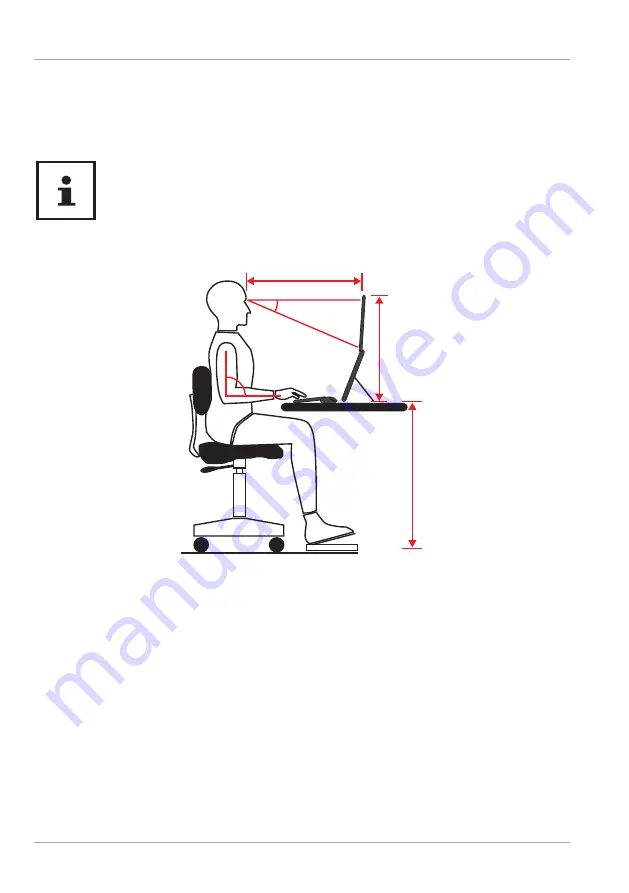
If it is not possible to position the screen as described, the following can be helpful:
• Rotate, lower or tilt the monitor;
• Slatted or vertical blinds on the windows;
• Partitions or changes to artifi cial lighting.
Take regular breaks when working at your monitor to
prevent tenseness and fatigue.
Sitting for a long time without changing position can be uncomfortable. Correct
posture is very important for minimising the risks of physical problems or damage.
90°
40 - 45°
50 - 60 cm
46 - 55 cm
66 - 71 cm
•
In general
– change your position frequently (around every 20-30 minutes)
and take regular breaks to avoid tiredness.
•
Back
– when sitting at your workstation, your back must be supported by your
chair’s backrest, which must be upright or angled slightly back.
•
Arms
– your arms and elbows should be relaxed and loose.
Your elbows should
be close to your body. Hold your forearms and hands roughly parallel to the
fl oor.
•
Wrists
– when working with the keyboard, mouse or trackball, your wrists
should be stretched out and not bent at an angle of more than 10°, where
possible.
Make sure that your wrists are not resting on the table edge itself.
•
Legs
– your thighs should be horizontal or angled slightly down.
Your lower
legs should form an angle with your thighs of approximately 90°. Your feet
should be resting fl at on the fl oor. Use a foot rest if you need one, but fi rst make
sure that your seat height has been adjusted correctly.
Setting up the PC
16






























